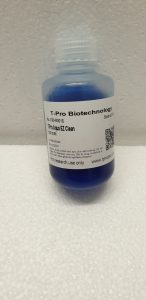Parabens are alkyl esters of 4-hydroxybenzoic acid (4-HBA), with short-chain parabens used as antimicrobials in cosmetics. We investigated the influence of chain construction on skin and liver metabolism. Incubations with main human hepatocytes and human liver S9 indicated that methyl-, ethyl-, propyl- and butylparaben have been quickly metabolized to comparable metabolites, together with 4-HBA plus the corresponding alcohols.
Liver and EpiSkin™ S9 have been used to analyze the metabolism of 16 brief and lengthy straight- and branched-chain parabens. The fee of hydrolysis usually decreased with rising chain size in liver S9, whereas the reverse was true for EpiSkin™ S9. Chain size additionally correlated with the quantity of metabolites, with extra oxidized metabolites detected from longer chain parabens.
The id of the alcohol group impacted metabolism probably the most, in phrases of the speed of metabolism and the contribution of cofactors. The majority of parabens (13/16) exhibited excessive plasma protein binding (PPB) (>90%); whereas, 4-HBA PPB was 38%. PPB was associated to the LogP of the parabens. In conclusion, the key and frequent paraben metabolite in PHH, liver S9 and EpiSkin™ S9 was 4-HBA.
The fee of metabolism, kind of metabolite and contribution of hydrolysis was tissue-specific (liver, skin) and was influenced by the chain size (and therefore LogP), structural isomeric type (straight vs branched), and/or the id of the alkyl group. SHORT ABSTRACT: We investigated how the chain construction of parabens impacts their metabolism by liver and EpiSkin™ S9.
The main and frequent metabolite in main human hepatocytes, liver S9 and EpiSkin™ S9 was 4-HBA plus the corresponding alcohols. The fee of metabolism, kind of metabolite and contribution of hydrolysis was tissue-specific and influenced by the chain size, structural isomeric type (straight vs branched), and/or the id of the alkyl group. Most parabens exhibited excessive PPB (>90%), whereas the PPB of 4-HBA was 38%.
Particle Focusing below Newtonian and Viscoelastic Flow in a Straight Rhombic Microchannel
Particle conduct in viscoelastic fluids has attracted appreciable consideration in latest years. In viscoelastic fluids, versus Newtonian fluids, particle focusing may be merely realized in a microchannel with none exterior forces or advanced buildings. In this research, a polydimethylsiloxane (PDMS) microchannel with a rhombic cross-sectional form was fabricated to experimentally examine the conduct of inertial and elasto-inertial particles. Particle migration and conduct in Newtonian and non-Newtonian fluids have been in contrast with respect to the circulation fee and particle measurement to analyze their impact on the particle focusing place and focusing width.

The PDMS rhombic microchannel was fabricated utilizing primary microelectromechanical methods (MEMS) processes. The experimental outcomes confirmed that single-line particle focusing was fashioned alongside the centerline of the microchannel in the non-Newtonian fluid, not like the double-line particle focusing in the Newtonian fluid over a variety of circulation charges.
Numerical simulation utilizing the identical circulation situations as in the experiments revealed that the particles suspended in the channel are inclined to drift towards the middle of the channel owing to the detrimental web pressure all through the cross-sectional space. This helps the experimental commentary that the viscoelastic fluid in the rhombic microchannel considerably influences particle migration towards the channel heart with none exterior pressure owing to coupling between the inertia and elasticity.
Individual elements that affect job efficiency on a straight ladder in older individuals
Older adults have the very best incidence of home ladder falls, however little investigation has been given to this vital harm problem. There is due to this fact a necessity to grasp the affect of particular person elements like bodily and cognitive capability and psychological standing on protected and efficient ladder use in this inhabitants. This research investigated associations between imaginative and prescient, decrease and higher limb sensation, higher limb management, power, steadiness, cognitive operate and psychological standing with job completion time and quantity of ladder strikes taken in a simulated roof gutter clearing job on a straight ladder in 97 older adults.
Several measures from higher limb management, power, steadiness, processing pace, govt operate and psychological domains have been considerably related to the 2 ladder job efficiency measures. Upper limb bimanual coordination, knee extension power, coordinated leaning steadiness, and self-reported risk-taking have been recognized as impartial and important predictors of job completion time in a a number of regression mannequin, predicting 56% of the variability in ladder job completion time.
Upper limb bimanual coordination and proprioception, easy response time and coordinated leaning steadiness have been impartial and important predictors of the quantity of ladder strikes in a separate a number of regression mannequin, predicting 38% of the variability in ladder strikes taken. These findings assist determine people at larger ladder fall threat and can information ladder fall interventions, reminiscent of power and steadiness coaching, ladder design and focused security directions.
Properties and Composition of Products from Hydrotreating of Straight-Run Gas Oil and Its Mixtures with Light Cycle Oil Over Sulfidic Ni-Mo/Al 2 O 3 Catalyst
Straight-run gasoline oil (SRGO) and its mixtures with 5, 10, 15, and 20 wt % mild cycle oil (LCO) from fluid catalytic cracking (FCC) have been hydrotreated on a business NiMo/Al2O3 catalyst in a laboratory tubular reactor with the cocurrent circulation of the uncooked materials and hydrogen. The hydrotreating of the uncooked materials was undertaken at a temperature of 350 °C, a stress of Four MPa, a weight hourly area velocity of ca 1.zero h-1, and a hydrogen-to-raw-material ratio of 240 m3·m-3.
The LCO had a excessive density as a result of excessive content material of bicyclic aromatics and the excessive content material of sulfur species, that are tough to desulfurize. Therefore, rising the content material of the LCO in the uncooked materials resulted in rising the density and rising the content material of the sulfur and polycyclic aromatics in the hydrotreated merchandise. Only the merchandise ready from the uncooked materials with LCO content material as much as 10 wt % fulfilled the density requirement of EN 590.
To enhance the product density, the merchandise ready from the uncooked materials containing 15 wt % LCO have been blended with refined kerosene. The addition of the kerosene decreased the density of the mixtures ready, however the chilly filter plugging level (CFPP) of the mixtures was solely lowered by about 1-2 °C. It was vital so as to add a depressant in an quantity of 600 mg·kg-1 to attain a chilly filter plugging level of -20 °C. Some refined merchandise have been blended with desulfurized heavy naphtha from the FCC. The addition of the heavy naphtha was primarily restricted by its excessive density.
Up to 10 wt % heavy naphtha might be added to the product obtained by hydrotreating the uncooked materials containing 10 wt % LCO. More than 15 wt % heavy naphtha might be added to the combination of the hydrotreated product and 20 wt % kerosene.

